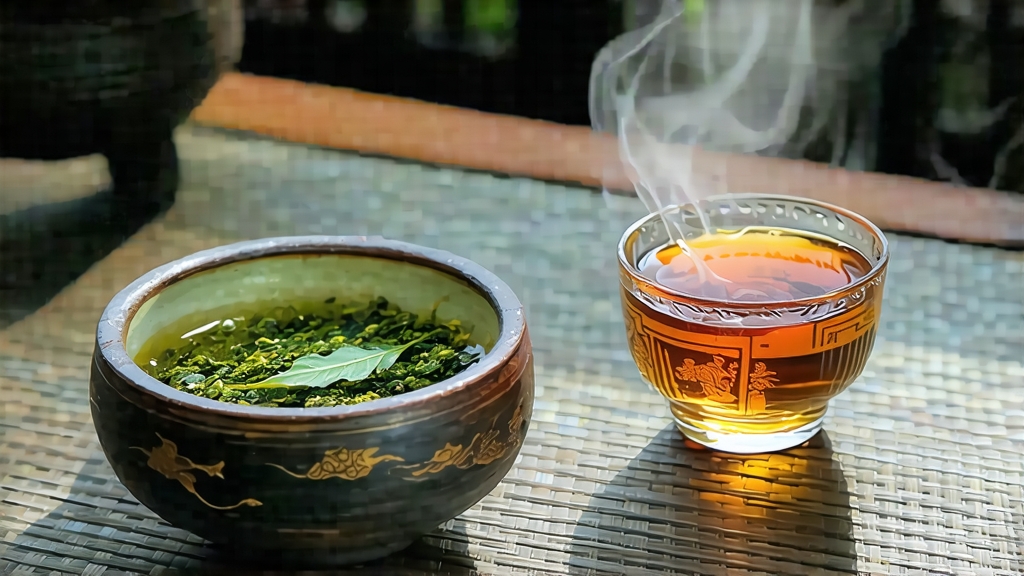
From the first sip, Tie Guan Yin feels like drinking liquid jade—floral, creamy, and inexplicably refreshing. Yet behind this sensory charm lies one of China’s most intricate oolongs, a tea whose name translates as “Iron Goddess of Mercy” and whose story weaves together legend, dynastic politics, soil science, and the quiet devotion of generations of farmers in southern Fujian’s Anxi County.
1. Legend and Historical Footprints
The most popular tale dates to the Yongzheng era (1723–1735). A poor farmer named Wei Yin, devout to the Bodhisattva Guan Yin, found a withered iron statue of the deity in a mountain crevice. After carrying it home and burning incense daily, he dreamed that the goddess guided him to a peculiar tea shrub behind his hut. The next morning he transplanted the shrub, nurtured it, and discovered its leaves produced an extraordinarily fragrant liquor. Villagers soon attributed healing powers to the brew; the “iron” in the name honors the statue, while “Guan Yin” pays homage to the goddess.
Documentary evidence is more prosaic but equally fascinating. Anxi county gazettes from the Qianlong reign (1736–1795) already list “Guan Yin” as a tribute tea, suggesting that by the mid-18th century the cultivar and its processing secrets were entrenched. Coastal Fujian’s mercantile culture carried the tea to Minnan diaspora communities in Taiwan, Southeast Asia, and eventually Europe, where Victorian merchants marketed it under the poetic label “Iron Goddess.”
2. Cultivar Spectrum: Not All Tie Guan Yin Is Created Equal
Modern DNA fingerprinting confirms that the original “Hong Xin Wei Tou” (red-stem, tilted-head) biotype is a distinct Camellia sinensis var. sinensis strain. From this mother plant farmers have selected at least six clonal offshoots—Hong Xin 1, Hong Xin 2, Bai Ya Guan Yin, Zhang Ping Guan Yin, and the rare Jin Guan Yin—each differing in leaf thickness, polyphenol ratio, and aromatic precursors. Purists argue only teas grown within Anxi’s 24 designated townships and processed according to the county’s 2002 Geographical Indication code can bear the name.
3. Terroir: Why Anxi’s Granite Slopes Matter
Anxi sits on 100-million-year-old granitic bedrock. Weathered into sandy loam rich in potassium and magnesium, the soil drains rapidly yet retains enough moisture to stress the bushes, concentrating amino acids and volatile aromatics. Diurnal swings of 10 °C between fog-cooled dawns and subtropical afternoons slow photosynthesis, thickening cell walls and yielding the signature “yin yun”—a cooling, mineral aftertaste reminiscent of wet stone. Elevation matters too: bushes above 600 m mature three weeks later than valley plants, accumulating more aromatic esters and less bitter catechins.
4. Crafting the Goddess: A Five-Act Drama
Unlike green tea (kill-green immediately) or black tea (full oxidation), Tie Guan Yin is a choreography of partial oxidation, bruising, and baking.
Act I: Picking
Only the “open face” standard—three leaves and a bud—is pluned between 10 a.m. and 2 p.m. when surface moisture has evaporated but turgor remains high.
Act II: Sun Withering
Leaves are spread 2 cm thick under 70 % sunlight for 20–40 min, triggering enzymatic hydrolysis of glycosides into geraniol and linalool.
Act III: Rocking & Oxidation
In a bamboo drum the leaves are tossed for 3–8 min every hour overnight. Edge bruising exposes catechins to polyphenol oxidase, achieving 20–30 % oxidation—less than Da Hong Pao, more than green tea.
Act IV: Kill-Green & Shaping
A 280 °C drum pan-fire halts oxidation within 90 s. While still pliable, leaves are wrapped in square cloth and rolled under mechanical pressure into the iconic “dragonfly head, toad tail” nugget. This repeated bundling and breaking ruptures cells, fusing leaf juices into a glossy emerald shell.
Act V: Baking & Refining
Traditional charcoal baking over lychee wood lasts 6–10 h at 60–80 °C,